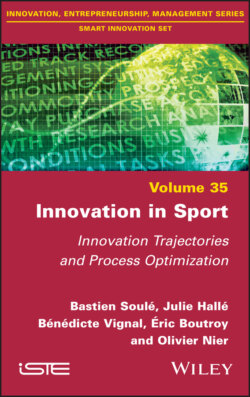Читать книгу Innovation in Sport - Bastien Soule - Страница 15
1.2.2. Innovation through use: user participation
ОглавлениеMaking the user a partner in innovation is not a new idea. The approach is the result of the observation that 80 to 90% of innovation attempts (whether they be products or services) end in failure. There are many different approaches to innovation that implicate users (innovation through use, user-centered approach, etc.). Whatever the favored one, innovation is thought of as an iterative and whirlwind-like process, during which a good, a service or a process encounters users, or not. The challenge is, of course, to encourage this adoption.
Faced with the order to innovate, recourse to the sociology of uses (Akrich and Méadel 2004) makes it possible to accompany the action, particularly in the case of disruptive innovations (Cardon 1997). The user then becomes a kind of useful resource for innovation actors (designers, marketers, etc.), as they can reduce risks by testing and validating ergonomic or technological choices as early as possible, for example. Ultimately, it is a matter of optimizing the creation of value and ensuring its perception. Any reusability is only possible if the user is interested in the object or service, and if we can verify that its use makes sense in his daily life. This perspective reflects renunciation into technical determinism, whereby the user is no longer considered a passive being nor a docile absorber of an innovative proposal.
Research on usage shows that usage does not exist in a desert of use and that the adoption of a good, in particular, is built around previous techniques and practices (Mallein and Toussaint 1994). Use is also social, since it develops over time and often comes up against the resistance of the social body and the weight of habits and tradition, which regularly thwart the diffusion of innovation (Perriault 1989). The value of the innovation is thus constructed by the meaning of favorable uses.
Depending on the approach, the question of usage can be raised at certain key points (usage-based approach) or during each of the major phases of the innovation process, that is anticipation, design, adaptation and adoption (user-centered approach). For each of these phases, specific tools from the human and social sciences and dedicated devices (places of interaction, co-creation platforms, test prototypes and usage analyses) are deployed in order to anticipate the technical requirements of users and their social and cultural anchoring. Finally, these methods allow for concrete tests, within the ordinary environment of practice, in order to study the ways of doing things, the resistances, and also the new configurations employed (appropriations, other uses or “misuses”).
